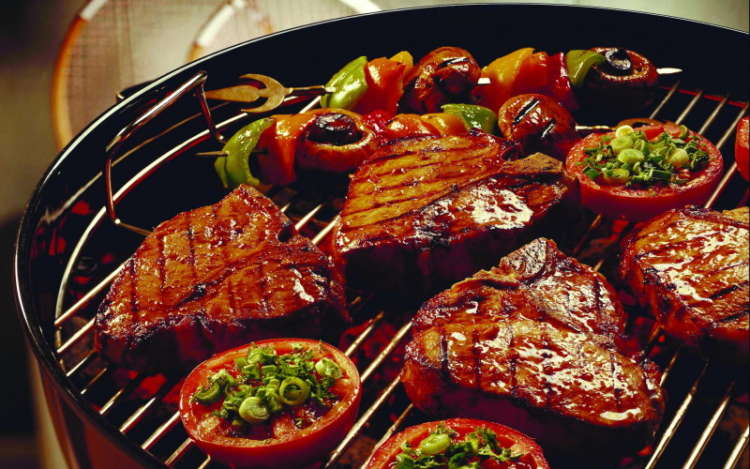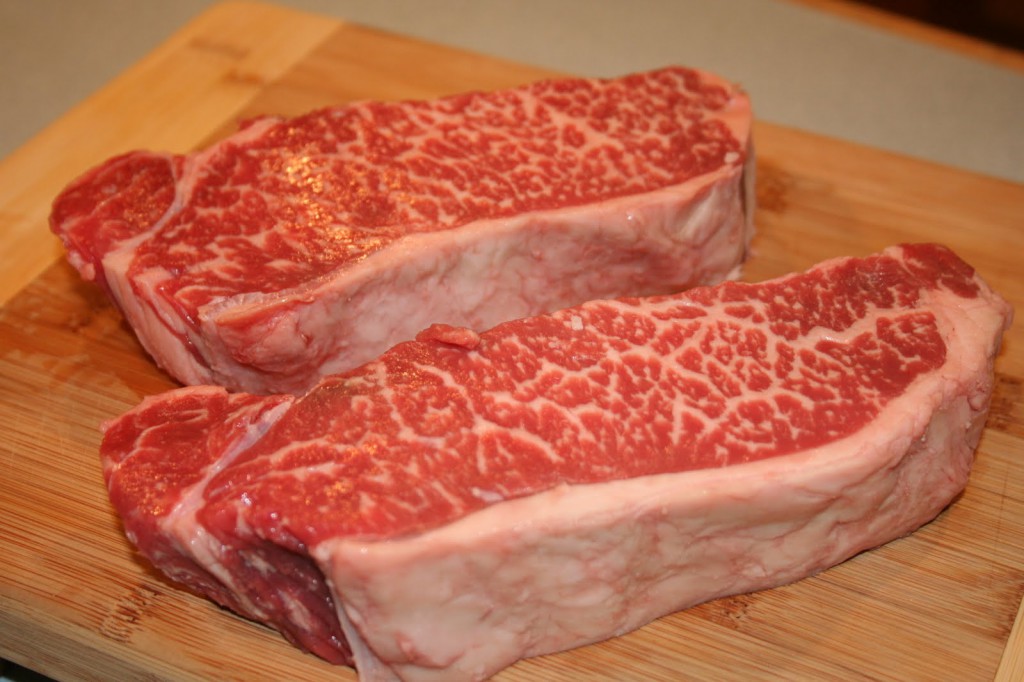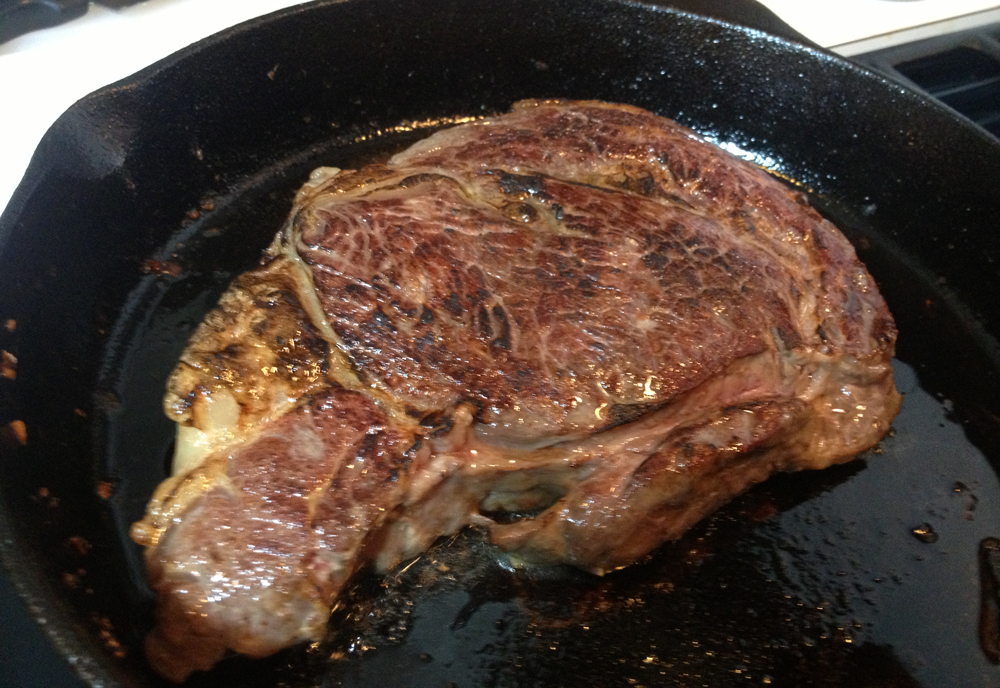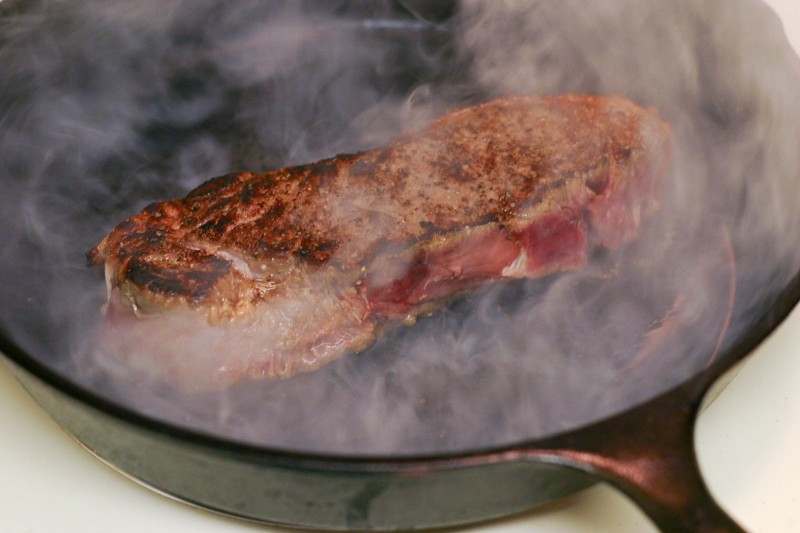Cooking Steak the Right Way - A Classic


We have the British to thank for this world-famous dish, who managed to bring back the prestige of roast beef back in the 15th century, when the practice of using young bulls instead of old tough beef became common. Although steak gained its incredible and worldwide popularity in the United States, becoming part of American national culture.
In essence, steak is a hastily fried piece of meat, which goes well with sauces with a pleasant sourness based on wine, some fruits and berries. With all this, the preparation of this coveted meat dish will not be difficult and will take a minimum of time. The main thing is to know the main secrets that we will be happy to tell you in our article - in short, how to cook steak correctly.
Steak Selection Rule: Only the Best Meat
Meat for steaks should be the highest grade you can afford. Only young bulls are suitable for a quality steak. Look for meat with a good texture and elasticity (it should return to its shape when pressed with a finger). The color should be pink (not deep red).
We also recommend the so-called "marbled" meat - due to the evenly distributed fat layers in the muscle tissue of young bulls, when cut it resembles the natural pattern of a noble stone. During the cooking process, the fat layers melt, filling the meat with juice, due to which it acquires a unique tenderness and softness. Look for small, evenly distributed fat inclusions and avoid thick and rare fat layers. Increasing the calorie content of your steak, these fat layers will make it more juicy and tender in taste. Also, marbled fat layers will insure you in case the meat is overcooked. In the end, if you are a supporter of a diet with a minimum of animal fats, refuse steak as such.

If you buy ready-cut steaks, pay attention to their thickness. The ideal thickness is 3-4 cm. A thinner piece may turn out dry. Remember: the thickness of the steak is more important than the weight! The meat for steaks should not be frozen, only chilled, and fresh meat is not suitable - for softness and juiciness, fresh meat should be aged for about three weeks. The ideal way to store raw steaks is vacuum bags.
Room temperature rule
Before cooking, steaks should always be at room temperature (ideally 20 degrees, if the temperature at your home is higher than 20 degrees, then watch the time, not letting the meat heat up completely). A cold steak will shrink and become tough when in contact with heat. This is the first and biggest mistake of many who undertake to fry steak. Therefore, take the steaks out of the refrigerator at least half an hour before cooking, depending on the size of the pieces of meat, the time required for heating can reach an hour. Dry the meat with paper towels, removing unnecessary moisture from the surface. If you put wet meat in the pan, your steak will boil rather than fry.
Don't rush to add salt
Don't salt steaks before cooking. Most people salt their steaks before cooking, but trust me, if you don't do this, the result will be juicier and tastier. It's best to salt immediately after cooking, letting the meat "rest" just before serving.
Salt causes moisture to come out on the surface of the meat, and so you risk boiling the meat instead of searing it again. When grilled, the meat will turn grey, but not golden brown, because meat turns brown at 155 degrees Celsius, and the water on the surface of the meat turns to steam at 100 degrees, causing the steak to turn grey and cook before it has time to brown.
An exception to the rule is a steak prepared by the salt-rolling method, when before cooking the meat is generously sprinkled with coarse-grained salt (sea salt will also work, but never fine table salt) and left for 1 hour at room temperature (this is how kosher meat is made). Then the salt is washed off, and the meat is thoroughly dried with paper towels before frying.
Use a meat thermometer.

Steaks differ in different degrees of doneness depending on the preferences of a particular gourmet. They are determined using a special meat thermometer, which is inserted exactly into the middle of the steak. In total, there are 4 degrees of doneness of steaks in the generally accepted English terminology:
 |  |
| Extra-rare or Blue (fr.bleu)46–49 °C fried on the outside and completely raw on the inside, the meat has a gel-like texture and is difficult to chew, the juices have not yet been released | Medium (French: demi-anglais)60–65 °C — pink at 25% center, firm, and still not far from the most perfect steak |
 |  |
| Rare (French: saignant)52–55 °C — seared on the outside and 75% cold raw center, the most tender and juicy steak, considered the perfect steak | Medium well (French: cuit)65–69 °C — almost completely cooked with a thin pinkish stripe passed the point of no return |
 |  |
| Medium rare (fr. to point)55–60 °C — medium rare, center is red and warm, firmer, still almost a perfect steak | Well done (fr.good luck)71–100 °C — grey-brown inside, no blood; rather tough, considered a less than perfect steak |
Over cooked (fr. trop cuit, carbonisé) We won't discuss it, it's simply burnt, terribly dry and tough meat.
Residual heat: Make sure the meat does not overcook
Remember, the meat will continue to cook for some time after you remove it from the heat. The internal temperature of the steak will rise a few degrees after you remove it from the heat, and will hold for 15-20 minutes, so pay attention to how long you leave the steak and allow it to cook using the residual heat before serving.
The reason why meat can be overcooked is because of the residual heat that moves from the hotter surface of the meat inward. The thicker and larger the steak, the more residual heat it will accumulate, so you should remove the meat from the heat a little earlier than the desired temperature, taking into account that the residual heat will continue to cook the meat.
Cooking Steak the Right Way: Three Classic Roasting Methods
Using dry heat is probably the best way to cook steaks, or any other tender, juicy meat. Dry heat gives meat a beautiful seared appearance, a nice doneness, and a complex flavor. This is partly the result of sugars in the meat going through a series of complex reactions called the Maillard reaction. The moisture on the surface of the meat evaporates and the juices are concentrated, creating an attractive brown crust. However, pan-frying is the quickest and easiest way. It all depends on the occasion.
Cast Iron Pan Seared Steak

You will need steaks of your choice, a cast iron skillet with a thick bottom and 2 tablespoons of vegetable oil.
Heat the frying pan over medium heat, pour in the oil and let it warm up. Place the steaks, previously dried with paper towels and heated to a temperature of 20 degrees, into the frying pan. To give the meat a special aroma when frying, you can add a sprig of rosemary to the pan. Fry for about 5-6 minutes on each side, determine the degree of readiness with a meat thermometer. Remove the meat from the heat, transfer to a plate, add salt, cover with aluminum foil and let it rest for a while before serving (5-10 minutes). During this time, the meat will continue to cook and release juice, which can be drained and added to the sauce that you plan to serve with the meat.
Serve whole or cut lengthwise into thinner pieces.
Steaks fried and baked

Preheat the oven to 260 degrees. A very hot oven will promote greater juiciness of the meat. Take an oven-proof frying pan and set it to maximum heat. With one quick movement, place the prepared meat in a dry, heated frying pan. If you are putting in several pieces, make sure that they do not touch each other. Cook without moving the meat for 1-2 minutes on each side. Remove the frying pan from the heat and move it to the oven. Cook the steaks for another 3-5 minutes, depending on the thickness of the meat and the desired degree of doneness. Remove the meat from the frying pan, transfer it to a plate, add some salt, cover with aluminum foil and let it rest for a while before serving (5-10 minutes). During this time, the meat will continue to cook and release juice, which can be drained and added to the sauce that you plan to serve with the meat.
Serve whole or cut lengthwise into thinner pieces.
Grilled steaks

Using dry heat is a great way to cook great, flavorful barbecue steaks. Remove the meat from the refrigerator at least an hour before cooking and marinate with your favorite marinade. Be sure to remove any moisture from the surface of the meat before grilling.
Heat the grill. Prepare the grate on which you will fry the meat. If you grease it or spray it with fat beforehand, the meat will not stick to the grate. Fry the meat for 3-4 minutes on each side, turning it over only once (!). Check the readiness with a meat thermometer. After removing the meat from the heat, let it rest for 15 minutes before serving.
Source http://u-povara.ru/pravil-gotovim-stejk-klassika-zhanra/